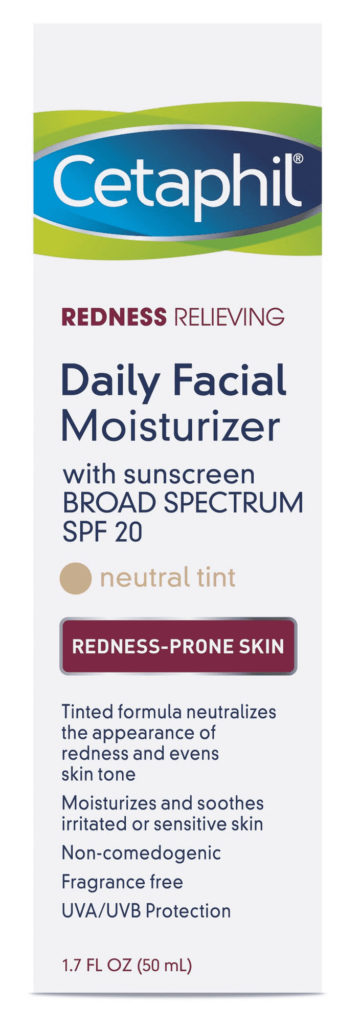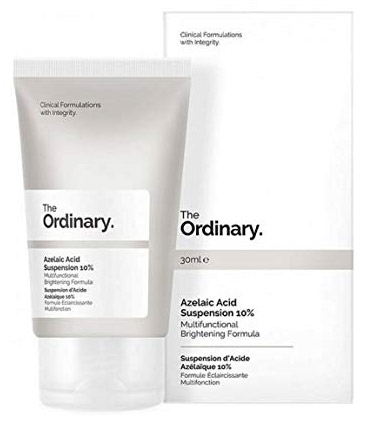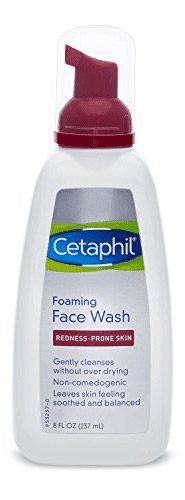Rosacea
What Would You Like to Know About?
Overview
Rosacea is a very common skin condition which typically appears during adulthood. It can present as facial redness, skin that blushes easily, the formation of small blood vessels (telangiectasias) on the face, and acne-like pimples.
Symptoms
Rosacea leads to redness, broken blood vessels, pus-filled bumps, and flushing of facial skin. Affected areas may feel sensitive, hot, sting or burn. A minority of rosacea patients, mostly men, develop thickening of the skin and enlargement of oil glands, which can give the nose an enlarged and bumpy appearance. The latter is called rhinophyma. Eye involvement is also possible, which may cause a bloodshot appearance to the eyes, or irritated eyes that some describe as feeling gritty or sandy.
Cause
The cause of rosacea is largely unknown. Those most at risk for this condition are adults who are fair-skinned with light hair and eye color (typically of Northern European descent), menopausal women, and individuals with a family history of rosacea. Demodex species (mites that normally inhabit human hair follicles) may play a role in rosacea. Some studies suggest that individuals with rosacea have a particular immune response to Demodex which causes inflammation.
The course of rosacea tends to be chronic. Some patients will experience progressive facial redness along with the formation of tiny blood vessels. Acne-like lesions may wax and wane.
Many factors have been linked to rosacea flares. The most common triggers are things that cause prolonged flushing. Excessive sun exposure and prolonged exposure to heat and cold (such as steam rooms or snow skiing) may ultimately cause permanent vasodilation (widening of blood vessels) or the formation of new blood vessels, which increase facial redness. Some patients notice that certain spicy foods, chocolate, hot drinks or alcoholic beverages trigger flares. Because rosacea triggers may be unique, patients with rosacea may benefit from keeping a journal to help identify factors that worsen their symptoms.
Treatment
Treatment of rosacea varies depending on the type and severity of rosacea. The most effective treatments for moderate to severe rosacea are prescription medications. Some treatments include: oral antibiotics such as doxycycline and minocycline, topical antibiotics (metronidazole gel, clindaymycin, etc), topical azelaic acid, sodium sulfacetamide/sulfur, ivermectin cream (targets a mite called Demodex), oral and topical retinoids, and topical brimonidine or oxymetazoline. Laser treatments performed in a physician’s office can also yield excellent results when treating facial blood vessels or redness.
Note that there are many over-the-counter products which aim to reduce redness. Some of these products claim to be backed by scientific data. However, caution is advised to the consumer as such products are not subject to the same, strict FDA guidelines and testing that are required of prescription products. Furthermore, their scientific data may not translate into meaningful, visible results.
OTC Treatment Options
Rosacea Without Pimples
Block

Cetaphil Redness Relieving Skin Facial Moisturizer SPF 20
- Elta MD UV Clear SPF 46 (zinc oxide; niacinamide may help reduct facial redness)
- Vanicream Sunscreen SPF 30 or 50+ (zinc oxide and titanium dioxide)
- Cetaphil DermaControl Oil Control Moisturizer SPF 30. (Light, matte finish for oily skin types.)
Conceal

Physicians Formula Gentle Concealing Stick
- NYX Concealer Wand
Mineral Based Makeup
- bareMinerals Original Foundation Broad Spectrum SPF 15
- L’Oreal True Match Naturale Powdered Mineral Foundation SPF 19
- Bobbi Brown Skin Foundation Mineral Makeup
- Clinique Redness Solutions Instant Relief Mineral Pressed Powder
- Jane Iredale Liquid Minerals Foundation
- bareMinerals Bareskin Pure Brightening Serum Foundation
Clinique Redness Solutions Instant Relief Mineral Pressed Powder
Rosacea Care Concealer Sample Box
Treat

- The Ordinary’s Azelaic Acid Suspension
- Cetaphil Redness Relieving Night Moisturizer
- Paula’s Choice 10% Azelaic Acid Booster
- Eucerin Redness Relief Night Cream
Instructions
AM
PM
OTC Tips
For rosacea without pimples, the treatments mostly aim at treating sensitive skin. More effective treatments for facial redness or blood vessels require a prescription or in-office procedures such as lasers or other treatments. Sunblock or sunscreens are the most important over-the-counter products to combat rosacea. As patients with rosacea tend to have sensitive skin, it is important to find products with an adequate SPF that do not cause irritation. The most effective agents are physical sunblocks which contain zinc oxide or titanium dioxide. Ultimately, however, the most important thing is to find a product that you like and will use regularly.
Concealers may be helpful to target specific areas that require extra attention when masking redness. Green or yellow concealers may be used to mask harsh red spots. Mineral based makeup doesn’t penetrate the skin and tends to be less irritating than other cosmetics, and ideal for people with rosacea. There are many lines that carry mineral based makeup. Some of the more popular brands are listed above.
Alternative/Complementary Therapy
Topical preparations with azelaic acid (available at higher concentration with prescription) may be helpful in the treatment of rosacea. Examples of available OTC products include oral supplements with ingredients such as niacinamide and zinc are advocated by some dermatologists to reduce inflammation associated with rosacea. TreeActiv Skin Savior (nicotinamide, folic acid, pyridoxine, milk thistle, selenium & zinc) is one such OTC example. Nicomide ® (niacinamide, zinc, folic acid, copper, selenium & chromium) is available with prescription.
Rosacea With Acne-like Pimples
Cleanse

Cetaphil Redness Prone Skin Foaming Face Wash
- Vanicream Gentle Facial Cleanser For Sensitive Skin
- Eucerin Redness Relief Soothing Skin Cleanser Gel
- CeraVe Foaming Facial Cleanser–for normal to oily skin
- Cetaphil Pro Oil Removing Foam Wash–for oily skin
- AcneFree Therapeutic Sulfur Mask (2-3 times per week only)
Block

Cetaphil Redness Relieving Facial Moisturizer SPF 20
- Elta MD UV Clear SPF 46 (zinc oxide; niacinamide may help reduct facial redness)
- Vanicream Sunscreen SPF 30 or 50+ (zinc oxide and titanium dioxide)
- Cetaphil DermaControl Oil Control Moisturizer SPF 30. A sunscreen, not a block. Light, matte finish for ily skin types.
Conceal

Skin Physicians Formula Gentle Concealing Stick
- NYX Concealer Wand
Mineral Based Makeup
- bareMinerals Original Foundation Broad Spectrum SPF 15
- L’Oreal True Match Naturale Powdered Mineral Foundation SPF 19
- Bobbi Brown Skin Foundation Mineral Makeup
- Clinique Redness Solutions Instant Relief Mineral Pressed Powder
- Jane Iredale Liquid Minerals Foundation
- bareMinerals Bareskin Pure Brightening Serum Foundation
Clinique Redness Solutions Instant Relief Mineral Pressed Powder
Rosacea Care Concealer Sample Box
Treat

The Ordinary's Azelaic Acid Suspension 10%
- Clean & Clear Persa Gel-10
- Differin 0.1% Gel
- Paula’s Choice 10% Azelaic Acid Booster
- La Roche-Posay Effaclar Adapalene Gel
- AcneFree Therapeutic Sulfur Mask
Instructions
AM
PM
Cleanse & rinse face. Treat with either Azelaic acid, Clean & Clear Persa Gel-10 or Differin 0.1% gel (see OTC TIPS below). Gently apply a redness relieving night facial moisturizer.
OTC Tips
OTC treatments for rosacea mostly aim at treating sensitive skin. More effective treatments for facial redness or blood vessels require a prescription or in-office procedures such as laser therapy. Products such as Persa Gel (benzoyl peroxide) and Differin (adapalene) may help with the acne like lesions of rosacea. They may also help with redness if the redness is due to the acne like lesions. These products do not help with the broken blood vessels. Both of these agents can cause irritation, and many people with rosacea have very sensitive skin to these types of products. Benzoyl peroxide and adapalene can cause significant redness, drying and irritation. Sulfur is an antiseptic with keratolytic activity that may have an unpleasant odor. Sulfur products usually do not cause as much irritation as benzoyl peroxide and adapelene and are found in some over the counter masks which may be used two to three times a week.
Sunblock or sunscreens are the most important over-the-counter products to combat rosacea. As patients with rosacea tend to have sensitive skin, it is important to find products with an adequate SPF that do not cause irritation. The most effective agents are physical sunblocks which contain zinc oxide or titanium dioxide. Ultimately, however, the most important thing is to find a product that you like and will use regularly.
Concealers may be helpful to target specific areas that require extra attention when masking redness. Green or yellow concealers may be used under makeup to mask harsh red spots. Mineral based makeup doesn’t penetrate the skin and tends to be less irritating than other cosmetics, and ideal for people with rosacea. There are many lines that carry mineral based makeup. Some of the more popular brands are listed above.

